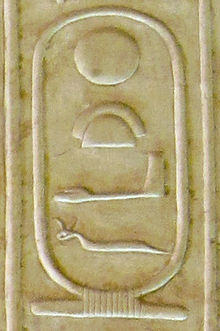Arm
By anatomical definitions, the bones, ligaments and skeletal muscles of the shoulder girdle, as well as the axilla between them, are considered parts of the upper limb, and thus also components of the arm.Therefore, fracture of the bone may not only lead to lesion of the radial nerve, but also haematoma of the internal structures of the arm.The basilic vein travels on the medial side of the arm and terminates at the level of the seventh rib.In Hindu, Buddhist and Egyptian iconography the symbol of the arm is used to illustrate the power of the sovereign.In Hindu tradition gods are depicted with several arms which carry specific symbols of their powers.In West Africa, the Bambara use forearm to symbolize the spirit, which is a link between God and man.However, in common, literary, and historical usage, arm refers to the entire upper limb from shoulder to wrist.The ball and socket shoulder joint allows for movement of the arms in a wide circular plane, while the structure of the two forearm bones which can rotate around each other allows for additional range of motion at that level.




Arm HoldingsArm (disambiguation)ArteryAxillary arteryAxillary veinBrachial plexusAnatomical terminologyhuman anatomyupper limbglenohumeral jointelbow jointradiocarpal jointwrist jointforearmligamentsskeletal musclesshoulder girdleaxillaroot wordupper limbsshoulder girdleshumeruslong bonesscapulashoulder jointradiushinge jointfascialintermuscular septaanteriorposterior compartments of the armperiosteumbiceps brachiibrachialiscoracobrachialismusculocutaneous nervetriceps brachii muscleradial nerveCutaneous innervation of the upper limbsanterior cutaneous nerve of the forearmlower triangular spacedeep artery of the armradial groovelesionsmedian nervepronator teresulnar nervemedial epicondyle of the humeruscondylarfracturesbrachial arterydeep artery of armteres majorcubital fossabicepstricepsbasilic veinvenae comitantesfracturehaematomaanastamoserecurrent radialbasiliccephalic veinsmedian cubital veinvenepuncturedeltopectoral triangleUSS Manchesterhieroglyphsblood pressurefracturedfracture of the humerus bonecoronary artery bypass graftforelimbsfour-legged animalarms of cephalopodsCommon flexor tendonElsevier Health SciencesMedical Subject HeadingsForeheadEyebrowEyelidTongueMandibleOcciputTempleAdam's appleThroatAbdomenMidriffVertebral columnThoraxBreastNipplePelvisGenitaliaScrotumShoulderFingerFingernailMiddleLittleButtocksToenailclavicleconoid tubercletrapezoid linecostal tuberositysubclavian groovesubscapularsupraspinatousinfraspinatoussuprascapulargreat scapularglenoid fossainfraglenoidsupraglenoidspine of scapulaacromioncoracoid processsuperiorinferiorlateralupper extremityanatomicalsurgical